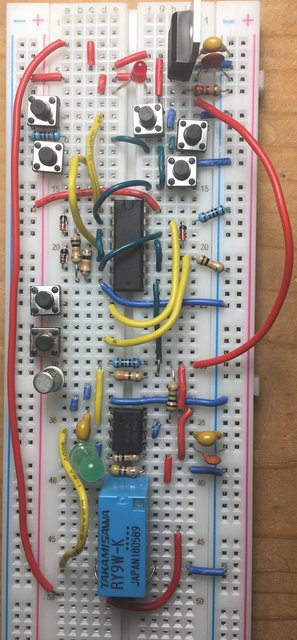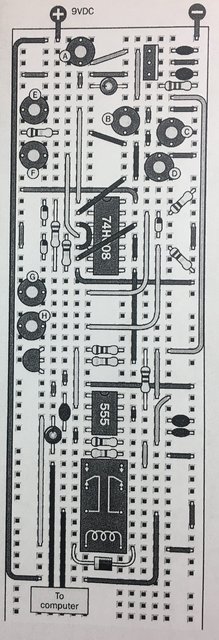So I have built the "combination lock" from Charles Platt's Make: Electronics experiment 21 a couple of times now without getting it working correctly. The schematic for the lock is below. The experiment is supposed to take a combination (pressing buttons E, F, G, H in order) to unlock the lock and provide power at the leads marked "to computer". The buttons E, F, G, H are tied to a 74HC08 Quad AND chip with each button tied to an AND gate. Each gate is unlocked in series by providing logical high as input from the previous button. That is how it is supposed to work, but mine does not! Using a logic probe, mine always has logic high on both inputs of button E so it seems to have no effect. Pressing buttons F and G then unlock the circuit (sending high to H) which does not appear to need be pressed at all. One other weird thing is that I can occasionally start with a logical low at AND gate E if I disconnect and reconnect the green jumper tied to pin 2 on the 74HC08 from the 10K resistor to the same AND gate input, but not always.
I have taken the 74HC08 out and tried each AND gate separately and they all appear to work correctly independent of experiment 21. But put it back into my circuit and logic high is always present on both inputs of the gate button E is attached to before I ever get started. Do I just need another chip to try this with (I don't have one)? Any help on how to troubleshoot further is appreciated!! Note: I have removed switch A in mine as it was too much trouble to keep it pressed while troubleshooting and just substituted a jumper.
Regards,
Robert Opalko



